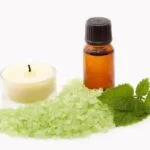
Essential oil dilution guidelines are crucial when using these powerful plant extracts for therapeutic purposes. Dilution involves mixing essential oils with a suitable carrier oil to reduce their concentration and potential skin irritation. This introductory section aims to explain the significance of following essential oil dilution guidelines for a safe and enjoyable aromatherapy experience.
Essential oils are highly concentrated substances derived from plants, possessing potent therapeutic properties. However, their concentrated nature means that they can be too strong and potentially harmful when applied directly to the skin. Essential oil dilution guidelines provide recommended ratios for safely diluting essential oils before topical application.
By following these guidelines, you can ensure that essential oils are effectively absorbed by the body without causing any adverse reactions. Diluting essential oils not only helps protect your skin but also allows you to use them over larger areas of your body more easily and frequently.
If you neglect to follow essential oil dilution guidelines, you may risk developing skin irritation, redness, or even burns. This is especially relevant for those with sensitive skin or allergies. Dilution also prevents any unwanted side effects from excessive absorption of certain chemical components in the oils.
In summary, understanding and adhering to essential oil dilution guidelines is vital in order to maximize the benefits of aromatherapy while minimizing any potential risks. The next sections will delve deeper into the specifics of these guidelines, highlighting common mistakes to avoid, discussing different methods of dilution, and exploring customized ratios for various applications like skincare or massage therapy.
The Basics
Essential oils are highly concentrated plant extracts that can offer a range of therapeutic benefits. However, it is crucial to understand the importance of essential oil dilution guidelines and follow them properly to ensure safe and effective use.
Essential oil dilution guidelines refer to the recommended ratios at which essential oils should be diluted with a carrier oil or other suitable base before applying them topically or using them in other applications.
The purpose of diluting essential oils is twofold: firstly, it helps to prevent skin sensitization or irritation that can occur when undiluted essential oils are used; and secondly, it ensures that the desired therapeutic effects of the essential oils are achieved without overwhelming the body’s systems.
When it comes to using essential oils, there are several reasons why following dilution guidelines is crucial. First and foremost, many essential oils are highly potent and can cause adverse reactions when used undiluted. Skin irritation, redness, burning sensations, and even allergic reactions can occur if improper dilutions are used.
Diluting essential oils also helps to increase their surface area of coverage on the skin, allowing for better absorption and enhanced effectiveness. Moreover, diluting the oils helps to prevent any potential interactions with medications or pre-existing medical conditions.
To follow essential oil dilution guidelines correctly, one must carefully choose a suitable carrier oil or base. Carrier oils such as sweet almond oil, jojoba oil, coconut oil, or grapeseed oil help to reduce the concentration of the essential oil while providing nourishment and additional benefits to the skin. Each carrier oil has its own unique properties that may be more suitable for certain skin types or applications.
To ensure proper dilution ratios when using essential oils, one can follow a simple step-by-step guide:
- Determine your intended use for the diluted mixture (e.g., skincare, massage).
- Consult reputable sources or aromatherapy resources for recommended ratios based on your intended use and specific essential oil(s).
- Start with a low dilution ratio, such as 1-2%, and gradually increase if necessary.
- Calculate the amount of carrier oil needed based on the desired dilution ratio and the amount of essential oil you wish to use.
- Thoroughly mix the essential oil and carrier oil together before use.
By adhering to essential oil dilution guidelines, individuals can safely enjoy the therapeutic benefits of these powerful plant extracts while minimizing the risk of adverse reactions or sensitivities. Remember, always consult with a qualified aromatherapist or healthcare professional for personalized guidance when using essential oils.
The Dos and Don’ts
When it comes to diluting essential oils, there are certain dos and don’ts that everyone should be aware of. Making these mistakes can not only compromise the effectiveness of the essential oil but also pose potential risks to your health. To ensure a safe and enjoyable aromatherapy experience, it is important to avoid these common mistakes:
- Don’t use undiluted essential oils directly on the skin: This is one of the most important rules when it comes to using essential oils safely. Undiluted essential oils can be too potent for direct application on the skin and may cause irritation, redness, or even burns. Always dilute your essential oils with a suitable carrier oil before applying them topically.
- Do research the specific dilution ratios for each essential oil: Different essential oils have different potencies and concentrations, which means they require different dilution ratios. It is crucial to research and follow the recommended dilution ratios for each individual essential oil you plan to use. Using too much or too little can affect both the safety and efficacy of the oil.
- Don’t exceed recommended dilution ratios: While using more oil might seem like a better idea to maximize its therapeutic effects, exceeding the recommended dilution ratios can lead to skin sensitization or other adverse reactions. Stick to the guidelines provided by reputable sources or consult with a certified aromatherapist if you need guidance on proper dilution ratios.
| Do | Don’t |
|---|---|
| – Dilute essential oils before applying them topically. | – Use undiluted essential oils directly on the skin. |
| – Research and follow the recommended dilution ratios for each essential oil. | – Use the same dilution ratio for all essential oils. |
| – Start with a conservative dilution ratio and adjust as needed. | – Exceed the recommended dilution ratios. |
By following these dos and don’ts, you can ensure that you are using essential oils safely and effectively. Keep in mind that everyone’s sensitivity to essential oils may vary, so it is always wise to perform a patch test before applying any diluted essential oil to a larger area of your body. Additionally, if you experience any adverse reactions or discomfort after using essential oils, discontinue use and seek medical advice if necessary.
Understanding Carrier Oils
Introduction to Carrier Oils
When diluting essential oils, one of the most crucial steps is choosing the right carrier oil as a base. A carrier oil serves two main purposes: it helps to dilute the potency of essential oils and allows for safe application onto the skin. By selecting an appropriate carrier oil, you can enhance both the efficacy and safety of using essential oils.
Types of Carrier Oils
There are various types of carrier oils available, each with its own unique properties and benefits. Some popular choices include almond oil, jojoba oil, coconut oil, olive oil, grapeseed oil, and avocado oil. It’s important to consider factors such as scent, viscosity, absorption rate, and shelf life when choosing a carrier oil.
- Almond Oil: Known for its mild aroma and moisturizing properties, almond oil is suitable for all skin types. It absorbs relatively quickly into the skin without leaving a greasy residue.
- Jojoba Oil: Similar in composition to our skin’s natural sebum, jojoba oil is well-tolerated by most individuals. It has a lightweight texture that absorbs easily and is ideal for facial care products.
- Coconut Oil: With its antimicrobial properties and nourishing benefits, coconut oil is popular for skincare routines. However, it has a high comedogenic rating (meaning it may clog pores), so individuals with acne-prone or oily skin should use it sparingly.
- Olive Oil: A household staple known for its rich antioxidants and moisturizing effects on the skin, olive oil is an affordable option for dilution purposes. However, it does have a heavier consistency and stronger aroma compared to other carrier oils.
- Grapeseed Oil: Derived from grape seeds through cold-press extraction methods, grapeseed oil is lightweight and absorbs quickly into the skin without leaving a greasy residue. It is often used as a massage oil due to its smooth texture.
- Avocado Oil: Packed with vitamins and fatty acids, avocado oil is highly moisturizing and nourishing for the skin. It has a thicker consistency, making it suitable for those with dry or mature skin.
Using Carrier Oils Safely
When utilizing carrier oils, it’s essential to ensure their quality and purity. Look for cold-pressed or expeller-pressed carrier oils that are free from additives or chemicals. Additionally, consider any allergies or sensitivities you may have when selecting a carrier oil.
Furthermore, it’s important to note that some essential oils may require specific carrier oils due to their chemical properties. Research individual essential oils to determine the most suitable carrier oil for each one.
By understanding the properties of different carrier oils and selecting the appropriate one for your needs, you can ensure a safe and effective dilution process when using essential oils.
Calculating Dilution Ratios
When it comes to using essential oils, proper dilution is crucial for ensuring safety and maximizing effectiveness. Dilution ratios refer to the proportion of essential oil to carrier oil needed in a blend. This section will provide you with a step-by-step guide on how to calculate dilution ratios accurately, allowing you to create well-balanced and safe blends.
- Determine the purpose of your blend: Before calculating the dilution ratio, it’s important to determine the intended use of your essential oil blend. Different purposes may require different dilution ratios. For example, blends used for skincare or massage might have lower dilution ratios compared to aromatherapy blends.
- Consult reliable resources: Look for reputable sources or professional aromatherapists who can provide you with recommended dilution ratios for specific essential oils and purposes. These resources often provide guidelines based on years of experience and research.
- Start with a low dilution ratio: It’s generally recommended to start with a lower dilution ratio, especially if you are new to using essential oils or have sensitive skin. This allows you to assess any potential adverse reactions and adjust the ratio accordingly. A common starting point is 1% dilution, which means one drop of essential oil per teaspoon (5 mL) of carrier oil.
- Use consistent measurements: Consistency is key when calculating dilution ratios. Use measuring spoons or droppers specifically designated for essential oils and carrier oils to ensure accurate measurements every time.
- Gradually increase potency if needed: If you find that the desired therapeutic effect is not achieved at the initial dilution ratio, you can gradually increase the potency by increasing the number of drops of essential oil while keeping the amount of carrier oil constant.
By following these steps and taking note of any individual sensitivities or allergies, you can confidently create well-diluted essential oil blends that are safe, effective, and enjoyable to use. Remember to always do a patch test before applying a new blend on a larger area of your skin and consult with a healthcare professional if you have any concerns or questions. Proper dilution allows you to harness the power of essential oils while minimizing the risk of adverse reactions.
Safety First
Essential oils are powerful substances derived from plants that can provide various health benefits and therapeutic effects. However, it is important to remember that these oils are highly concentrated and can cause adverse reactions if not used properly. This section will focus on the safety aspect of essential oil dilution guidelines, specifically addressing essential oil allergies and sensitivities.
Allergies and sensitivities to essential oils can occur in individuals with a heightened sensitivity to certain chemical compounds present in the oils. These reactions can range from mild skin irritations to more severe allergic responses. It is crucial to be aware of any known allergies or sensitivities before using essential oils, as this will help determine which oils should be avoided or used with caution.
To minimize the risk of an allergic reaction, it is recommended to perform a patch test before applying any undiluted essential oil directly on the skin. To do this, apply a small amount of diluted essential oil (a 2% dilution is commonly recommended) onto a small area of skin, such as the inner wrist or forearm.
Leave it on for 24 hours and monitor for any signs of irritation or redness. If no adverse reactions occur, it should be safe to proceed with using the essential oil.
Another important consideration when it comes to safety is the possibility of developing sensitivities over time with repeated exposure to certain essential oils. This can happen even if you have initially had no adverse reactions. To prevent sensitivities from occurring, it is best to rotate the use of different essential oils instead of using the same ones continuously. This minimizes your chances of overexposure and allows your body time to rest and reset between uses.
Benefits of Dilution
Proper dilution of essential oils not only ensures safety, but it also enhances the efficacy of these powerful natural substances. By understanding the benefits of dilution, you can maximize the therapeutic properties of essential oils and create a more enjoyable aromatherapy experience.
- Increased Absorption: When essential oils are diluted, they can be absorbed more easily into the skin. The diluted oil allows for better penetration into the cells, allowing the active compounds to exert their beneficial effects on the body. Without proper dilution, essential oils may sit on top of the skin or cause irritation, reducing their effectiveness.
- Reduced Irritation and Sensitization: Essential oils are highly concentrated substances that can potentially irritate the skin or cause sensitization when used undiluted. Diluting essential oils with a carrier oil helps to decrease the risk of adverse reactions and makes them safer to use topically. This is especially important for individuals with sensitive skin or those prone to allergies.
- Improved Spreadability: Diluting essential oils with carrier oils improves their spreadability and allows them to cover a larger area of the body. This is particularly useful in massage therapy where a larger quantity of oil is needed for optimal effect. It also helps ensure that each drop of essential oil is evenly distributed throughout the carrier oil, resulting in a more consistent application.
In order to determine an appropriate dilution ratio for your specific needs, it is advisable to consult reputable sources such as essential oil reference books or seek advice from certified aromatherapists. Remember that each individual’s tolerance and sensitivity level may vary, so starting with lower dilutions and gradually increasing as needed is recommended.
| Benefits | Description |
|---|---|
| Increased Absorption | Dilution allows for better absorption into the skin. |
| Reduced Irritation and Sensitization | Dilution decreases the risk of adverse reactions. |
| Improved Spreadability | Dilution with carrier oils enhances coverage and application. |
Different Methods of Dilution
Direct Inhalation
One of the simplest and most direct methods of diluting essential oils is through direct inhalation. This method involves placing a few drops of undiluted essential oil onto a tissue or cotton ball and holding it near the nose or inhaling deeply from the container.
This technique allows for immediate and intense aroma experience, making it ideal for respiratory support or mood enhancement. However, since undiluted essential oils can be potent and irritating to some individuals, it is important to test with caution and ensure that the scent is not overwhelming.
Aromatic Bath
Another popular method of dilution is through aromatic baths. To create an aromatic bath, add a few drops of essential oil to a carrier oil such as almond or jojoba oil, then disperse the mixture into warm bathwater. The heat from the water helps to vaporize the essential oil molecules, allowing them to be inhaled while enjoying a relaxing soak.
This method not only provides a luxurious sensory experience but also allows for full body absorption through the skin. It is important to note that some essential oils may cause skin irritation if not properly diluted in carrier oils before being added to bathwater.
Topical Application
Topical application is one of the most common methods of using diluted essential oils on the skin. To dilute an essential oil for topical use, mix a small amount (usually 1-2% concentration) of essential oil with a suitable carrier oil before applying it to the desired area.
Carrier oils act as vehicles for distributing essential oils across the skin, providing hydration and preventing any potential irritation or sensitization that may occur when using undiluted oils directly on the skin. Popular carrier oils include coconut oil, sweet almond oil, and grapeseed oil.
Each method offers different benefits and uses depending on personal preference and the desired effect. It is essential to follow proper dilution guidelines for each method to ensure safe and effective use of essential oils. Experimenting with different techniques can help individuals discover their favorite methods of dilution and maximize the benefits derived from using essential oils in their daily lives.
Essential Oil Dilution Guidelines for Specific Purposes
Skincare
When it comes to using essential oils in skincare, dilution is crucial to avoid any adverse reactions or skin sensitivities. Since the skin is the largest organ of our body, it is essential to treat it with care and respect. Diluting essential oils properly allows them to be absorbed into the skin without causing irritation or damage.
For skincare purposes, a general rule of thumb is to dilute essential oils at a rate of 1% to 2%. This means that for every 1 tablespoon (15 mL) of carrier oil or lotion, you should add no more than 3-9 drops of essential oil. However, some essential oils have stronger properties and may require even lower dilution ratios. It is always best to start with a lower dilution and gradually increase if needed.
It is also important to consider your individual skin type and sensitivity when determining the dilution ratio for skincare products. Those with sensitive or reactive skin may need to use an even lower dilution ratio.
Additionally, certain essential oils are known to be more suitable for specific skin concerns, such as tea tree oil for acne-prone skin or lavender oil for soothing sensitive skin. Consulting with a qualified aromatherapist or skincare professional can help you determine the best dilution ratios and essential oils for your unique needs.
Massage
When using essential oils in massage therapies, proper dilution is vital both for safety reasons and therapeutic effectiveness. Undiluted essential oils can be too potent and may cause skin irritation or allergic reactions when directly applied to the body. Diluting them in a carrier oil not only ensures safe application but also allows for better absorption and distribution of the therapeutic benefits.
The recommended dilution ratio for massage blends typically ranges from 1% to 5%, depending on the purpose and individual client’s needs. For general relaxation or daily maintenance massages, a 1% dilution (approximately 6 drops of essential oil per 1 ounce/30 mL of carrier oil) is commonly used.
For more targeted treatments or specific conditions, such as muscle tension or pain relief, a higher dilution of up to 5% (roughly 30 drops per 1 ounce/30 mL of carrier oil) may be appropriate.
When selecting a carrier oil for massage, consider factors such as texture, scent, absorbency, and any potential allergens. Common carrier oils used in massage include sweet almond oil, jojoba oil, coconut oil, or grapeseed oil. Each has its own unique properties and benefits that can enhance the massage experience. Experimenting with different carrier oils can help you find the one that works best for your needs and preferences.
Aromatherapy
Aromatherapy refers to the inhalation or diffusion of essential oils for therapeutic purposes. Depending on the desired effects and concentration levels needed for aromatherapeutic use, dilution ratios may vary. In many cases, lower dilutions are recommended when diffusing essential oils due to their direct contact with the respiratory system.
For atmospheric diffusion in larger spaces, a general guideline is to use 5-10 drops of essential oil per 100mL (3.38 ounces) of water in a diffuser. However, it is important to refer to your specific diffuser’s instructions as they may have their own recommendations or limitations. For personal inhalation devices like inhalers or nasal sprays designed for aromatherapy purposes, a lower dilution ratio is typically used – about 2-4 drops of essential oil per device.
When using essential oils topically for aromatic purposes such as inhaling from a small bottle or applying them to clothing or accessories (e.g., aromatherapy jewelry), extra caution should be taken due to direct contact with the skin and potential sensitivities. In these cases, a dilution ratio of 1% or less is often recommended to minimize the risks of skin irritation or sensitization.
By customizing dilution ratios for specific purposes like skincare, massage, and aromatherapy, you can safely enjoy the many benefits of essential oils while optimizing their effectiveness. Remember to always start with lower dilutions and gradually increase as needed, and consult with professionals if you have any concerns or questions regarding your unique situation.
FAQs
In this section, we will address some frequently asked questions about essential oil dilution guidelines to provide clarity and ensure a safe and effective use of these potent natural substances.
- What are essential oil dilution guidelines?
Essential oil dilution guidelines refer to the recommended ratios of essential oils to carrier oils or other diluents that should be used when applying essential oils topically. These guidelines help ensure a safe and appropriate use of essential oils, as undiluted or improperly diluted essential oils can be too strong and cause skin irritation, sensitivity, or other adverse reactions.
- Why is it important to follow essential oil dilution guidelines?
Following essential oil dilution guidelines is crucial for several reasons. Firstly, it helps prevent skin sensitization or irritation, especially for those with sensitive skin or underlying health conditions. Additionally, diluting essential oils properly enhances their absorption into the skin and reduces the risk of wasting costly oils by using excessive amounts. Lastly, proper dilution ensures that the therapeutic properties of the essential oils are effectively delivered and maximized.
- How do I know which carrier oil to use for diluting essential oils?
The choice of carrier oil depends on personal preference, intended use, and individual skin type. Commonly used carrier oils include jojoba oil, sweet almond oil, coconut oil, grapeseed oil, and olive oil. It’s crucial to select high-quality carrier oils that are pure and preferably organic to avoid any potential contaminants or additives that could react with the essential oils.
Table: Examples of Carrier Oils for Essential Oil Dilution
| Carrier Oil | Description |
|---|---|
| Jojoba Oil | A versatile carrier oil suitable for all skin types. It closely resembles the natural oils on our skin, making it easily absorbed. |
| Sweet Almond Oil | A light and gentle carrier oil rich in vitamins and minerals. It is well-tolerated by most skin types. |
| Coconut Oil | A popular carrier oil with moisturizing properties. However, it may not be suitable for oily or acne-prone skin due to its comedogenic rating. |
| Grapeseed Oil | A lightweight carrier oil with a non-greasy texture, known for its high linoleic acid content which makes it beneficial for acne-prone skin. |
| Olive Oil | An easily accessible carrier oil that provides nourishment and hydration to the skin. It is suitable for most skin types. |
It’s important to note that dilution ratios may vary depending on factors such as the individual’s age, overall health, and the specific essential oil being used. Therefore, it’s always recommended to consult reliable sources or seek guidance from a qualified aromatherapist when determining appropriate dilution ratios for your unique needs.
By following essential oil dilution guidelines, you can safely experience the many benefits of aromatherapy while minimizing the risk of adverse reactions. Proper dilution ensures that essential oils are used effectively and responsibly, allowing you to enjoy their therapeutic qualities with peace of mind.
Conclusion
In conclusion, it is of utmost importance to follow essential oil dilution guidelines for a safe and enjoyable aromatherapy experience. Dilution is crucial for several reasons. First and foremost, essential oils are highly concentrated substances that can cause skin irritation, sensitization, or even allergic reactions if used undiluted. By diluting them properly, you can reduce the risk of adverse effects while still enjoying their therapeutic benefits.
Following essential oil dilution guidelines also ensures that you achieve the desired efficacy of the oils without compromising safety. Dilution allows the oils to be absorbed into the skin more easily and evenly, enhancing their penetration and effectiveness. Without proper dilution, you may not experience the full potential of the oils or may even overpower your senses with their strong aroma.
In addition to safety and efficacy, understanding and following dilution guidelines also help you customize your aromatherapy experience according to specific purposes or applications. Different dilution ratios are recommended for skincare, massage, and aromatherapy, allowing you to tailor your dilutions based on the intended use. This allows you to address different concerns effectively while avoiding any potential risks associated with using essential oils inappropriately or excessively.
Ultimately, by adhering to essential oil dilution guidelines, you can make the most out of your essential oils while prioritizing your well-being. Whether you are new to aromatherapy or an experienced user, practicing safe and effective dilution techniques will ensure that your experience with essential oils is both enjoyable and beneficial. So remember to always consult reputable sources, educate yourself about proper dilution ratios for various applications, and prioritize safety when incorporating essential oils into your daily routine.
Frequently Asked Questions
What is the ratio to dilute essential oils?
The ratio to dilute essential oils depends on the purpose and the specific essential oil being used. In general, a safe and common dilution ratio is 2-3 drops of essential oil per teaspoon (5 mL) of carrier oil for adults.
However, for children, elderly people, or those with sensitive skin, a lower dilution ratio of 1 drop per teaspoon of carrier oil is often recommended. It’s important to note that certain essential oils may require even lower dilution ratios due to their potency or potential skin sensitivities, so it’s always advisable to research and follow specific guidelines for each oil.
How much essential oil to add to 1 oz carrier oil?
When adding essential oils to carrier oil, the recommended amount is typically 2-3 drops per 1 ounce (30 mL) of carrier oil for general applications. This ratio provides an adequate level of dilution while still allowing the benefits of the essential oil to be enjoyed.
However, if you are working with stronger or particularly potent essential oils, you might want to start with fewer drops and gradually increase until you reach your desired scent or therapeutic effect. Remember that some essential oils, such as peppermint or cinnamon, are known for their strong aroma and might require less than 2-3 drops in a single ounce.
How do you mix and dilute essential oils?
Mixing and diluting essential oils can be done by following a few simple steps. First, choose a suitable carrier oil, such as sweet almond oil, jojoba oil, or coconut oil. Measure out your desired amount of carrier oil using a measuring spoon or pipette and pour it into a clean glass bottle or container. Next, add the recommended number of drops of your chosen essential oils into the carrier oil.
Gently swirl or roll the bottle between your hands to mix the essential oils with the carrier oil but avoid shaking vigorously as this can create air bubbles and affect measurements. Once mixed thoroughly, your diluted blend is ready for use. Always label your blends with the date, oils used, and their dilution ratio for future reference, and store them in a cool, dark place to maintain their potency.





